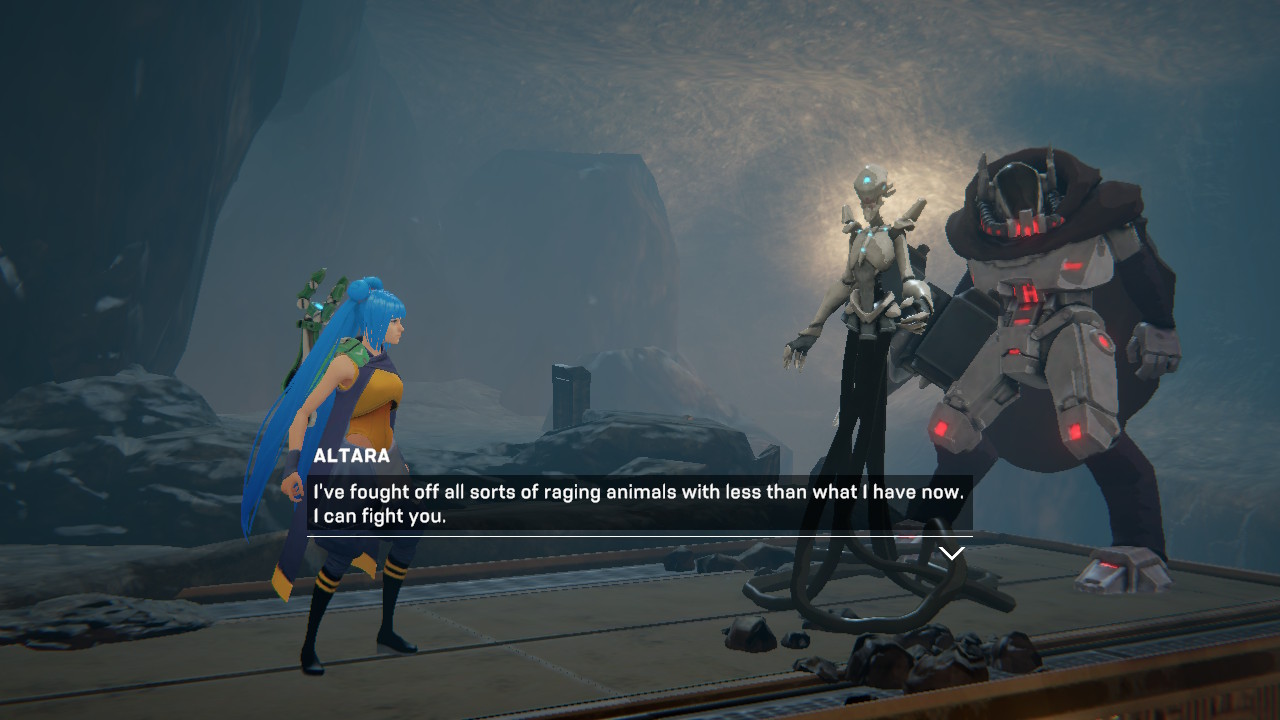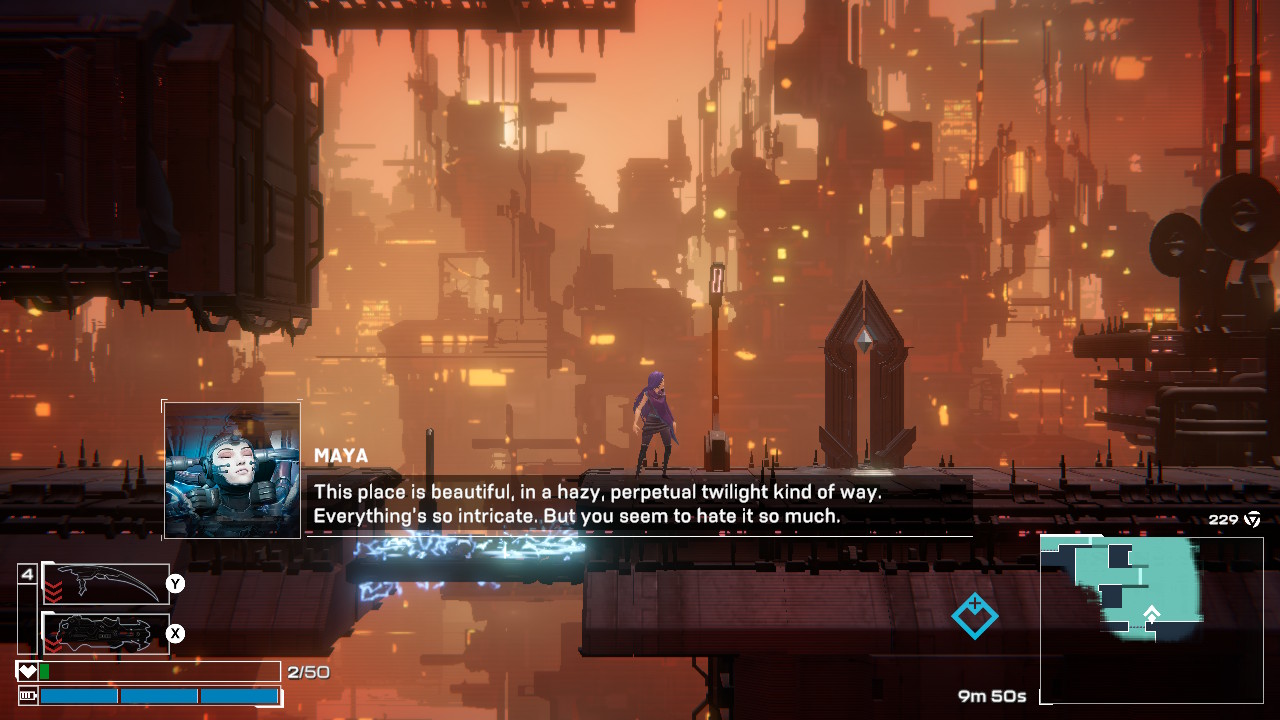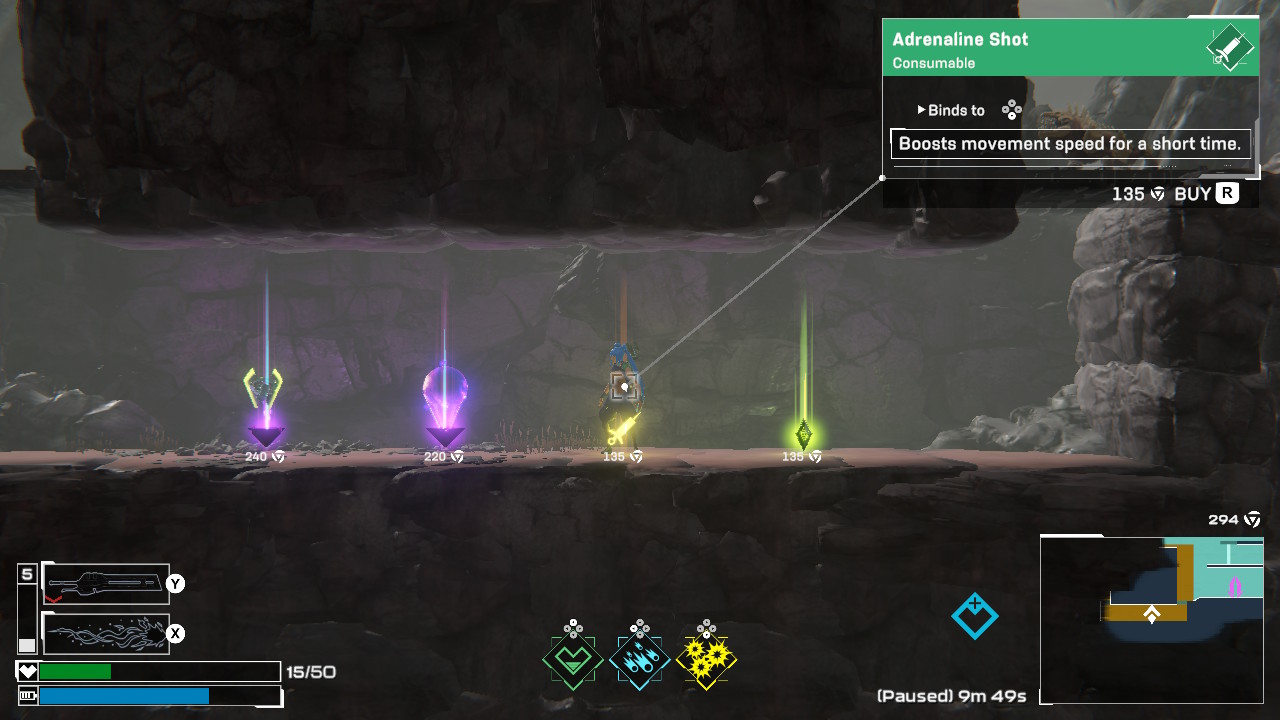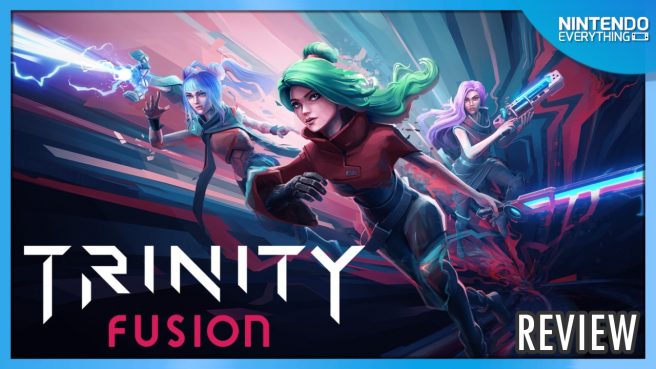[Review] Trinity Fusion
System: Switch
Release date: August 1, 2024
Developer: Angry Mob Games
Publisher: Angry Mob Games
The idea of a multiverse is nothing new, but it tends to be the domain of movies and TV series rather than video games, especially in recent times. Angry Mob Games’ title Trinity Fusion brings this concept to the roguelite genre in some interesting ways that make it a far more immersive experience than I was expecting, although it never capitalizes on its more unique premise to deliver a more memorable time. Despite this, for fans of the genre it is definitely worth a look-in.
Trinity Fusion is an intriguing title from the get-go, as it throws you into the heart of a multiverse in peril. Mankind, in its infinite wisdom, decided to split the universe into three – the Underworld, Overworld, and Hyper World – whilst overseeing it all from their own separate reality, the ostentatiously-named Prime. This backfired spectacularly, and now it is up to Maya, a denizen of the Prime, to oversee her three alternate selves and piece the multiverse back together before it all collapses. This is all thrown at you in the opening cutscene, but for the full story you’ll need to uncover it yourself by discovering lore entries in each level and speaking to various NPCs: unfortunately, the game prefers to let its narrative take a backseat rather than give it the spotlight.
The science-fiction setting makes the game’s overall presentation and structure much more appealing: each of the various levels you’ll explore is a part of this fractured multiverse, and has outstanding visual design that plays well into this futuristic dystopian setting. There is a much greater level of immersion when you’re hopping between different levels of reality that are connected by the thinnest thread, rather than traveling between biomes that are completely different and are yet something supposed to be connected to one another as part of a larger map. There is a fantastic sense of individuality to each level, as they all have their own terrain hazards and enemy types (a surprising amount of variety, considering how little time you spend in each) and the level that each of Maya’s three alternate selves begins in is unique to that character, making it a more personal journey to begin with, even if they all ultimately end up in the same place.

As the player you’ll pick between one of Maya’s three alternates to progress through the game. Neira, Altera, and Keira all have their own starting weapons and gameplay style, secondary abilities that can be acquired to open up pathways through shared levels that the others will not be able to access by default, and their own unique personalities and dialogue with Maya that make them worth playing with at least a few times for additional context about the state of the world, even if you don’t care for their particular playstyle. Despite playing through most of the game as Altera, Maya’s Underworld counterpart, I found myself occasionally switching to the other two characters for their commentary on the situation, and unique interaction with Maya.
Trinity Fusion is a roguelite first and foremost, with the usual randomized temporary upgrades and permanent progression mechanics you would expect of the genre, but whilst playing I often found myself forgetting this fact, as it often feels more like an action platformer or even a Metroidvania in structure. Levels are surprisingly large and non-linear, containing multiple exits, and are also packed with secrets that are quite rewarding to uncover. It places just enough out in the open in terms of power-ups and enemies that you can comfortably make straight for the nearest exit without being underpowered by the time you reach a boss, but offers plenty to reward those who take their time to explore.
Audio logs that reveal some snippet of backstory about the state of things, additional power-ups and currency for permanent upgrades, and shops with weapons that will be more powerful than what you’ll get from enemy drops, are amongst some of the things you can expect to find, and it always made me feel as though it was time well spent if I ventured off the beaten path to see what was hidden away in the level. Breakable walls and areas that are completely inaccessible unless you have access to a particular character’s secondary ability add to the Metroidvania feel of the game, and are a nice change from the normal linear stage-based gameplay that defines the genre.

Occasionally the game will shake things up by transporting you to The In-Between, which adheres to the more traditional roguelite structure, where you’ll choose between a series of rooms with various rewards waiting for you at the end. This is perhaps the weakest element of the game, as it ultimately boils down to a short platforming challenge or a small area filled with enemies to clear, and all to the backdrop of a bland, unimaginative void that feels jarring when compared to the rest of the game’s more creative scenery. However, it serves to break up the larger stages quite nicely if you’re the explorative type, and helps players who miss out on Amplifiers and weapon upgrades build up their strength for the upcoming boss battles. The In-Between usually precedes a boss battle, which is a far more strategic affair: most have multiple phases (although thankfully not multiple health bars) throughout the fight, clear attack patterns, and there is a suitable amount of variety throughout. Defeating a major story boss with any one character will also result in them not appearing a second time, making it easy to progress through the story and access different levels that you haven’t already cleared as you attempt to stabilize that part of the multiverse.
Amplifiers are your bread-and-butter upgrades that you’ll acquire as you progress through the game, and although they’re split into eight different categories and there aren’t very many different ones per type, a lot of them feel largely insignificant to the point of being useless by themselves. They can be combined for greater enhancements however, adding an interesting level of strategy to building a character for the duration of a run. One character may benefit more from a particular Amplifier than another, and the ability to reroll costs valuable currency that you’ll likely want to spend on weapons and items. Resource management feels particularly crucial at higher difficulties, and Amplifiers are treated more as another small resource than an immediate power increase. Amplifiers can only be combined with others, and once they’ve been acquired once during a run they won’t appear a second time.
Trinity Fusion also takes a slightly different approach to permanent progression with Psychic Augments and Combat Upgrades, both of which you can purchase in the hub world with a (predictably sparse) currency that you’ll acquire as you play. Psychic Augments act as your generally useful stat enhancers, and grant the usual additional abilities such as reviving once when you die and being able to parry enemy attacks,. However, they take up a number of slots, meaning that you’ll need to choose between which ones you want to equip even once you’ve unlocked them. Combat Upgrades are permanently available once you’ve unlocked them, and are focused more on giving you a small edge during a run: shops being available before boss battles, for example.

The overall effect of all of this is something of a double-edged sword, as it makes the game feel far less reliant on the frustrating RNG that defines many roguelites and more about the character you choose and how you build them initially. There is an element of RNG to be had with Amplifier selection, but these are acquired don’t have as significant of an impact on your ability to survive, especially in boss battles, as your overall loadout to begin with, serving more as an enhancement rather than the sole-defining factor as to whether you succeed or fail. This was something that I appreciated whilst playing, because although it made it difficult to overcome some of the game’s tougher challenges, it did mean that a sub-optimal selection of Amplifiers didn’t mark an immediate end to my run once I reached a boss.
Unfortunately, this focus on permanent progression mechanics does mean that it feels far more arduous and grindy than it needs to be at times, as you accumulate the currency you need for upgrades at a painfully slow rate, and costs become significantly steeper after you unlock the first tier of a Psychic Augment. The effects of Combat Upgrades are also more reliant on the non-permanent currency you earn from defeating enemies as you progress, and this is similarly scarce, making their usefulness limited. More than once I’d reach a shop without the currency needed to buy anything in it, and randomized weapon drops often felt unfairly weaker by comparison.
It is far more difficult to overcome obstacles through repeated runs in Trinity Fusion than most roguelites because of the slow rate of permanent progression and the heavy emphasis the game places on it, meaning that runs can feel just as much of a complete waste of time as they would if they were entirely RNG dependent. The game attempts to cater to all types of players despite this, offering a Hyper Mode to improve damage reduction with each consecutive death that can be enabled at any time, and a Hardcore Mode that unlocks once you complete a run on Veteran difficulty that is significantly more challenging.
But by far the most frustrating thing about Trinity Fusion are its load times. It can take upwards of twenty seconds to load into a map, with longer times for the In-Between than other stages despite the notable lack of scenery in the area. This feels excessive when you consider that you’ll probably only be playing for around ten minutes at a time unless you meticulously comb each stage for power-ups, and this will happen every single time before you enter a new level. Over extended play sessions I often felt that I was spending just as much time waiting for the next map to load as I was actually playing. To its credit the game runs reasonably well on Switch after this initial loading, and most areas are quite eye-catching in both docked and handheld modes, although some level of detail is lost in the latter and it can be difficult to make out what is going on at times.
The Verdict

Trinity Fusion doesn’t really do anything we haven’t seen before, but it takes some of the best ideas from some of the better roguelites from the last several years and adds its own unique twist to them to create something that often feels more like an action platformer or Metroidvania than a traditional roguelite. It offers a surprising amount of variety, and although progression can be incredibly frustrating at times, it’s a more strategic take on the genre than I was expecting. It’s definitely worth a look if you’re after a roguelite with a slightly different approach to the usual repetitive grind of the same limited amount of content.
Trinity Fusion copy provided by the publisher for the purposes of this review.
